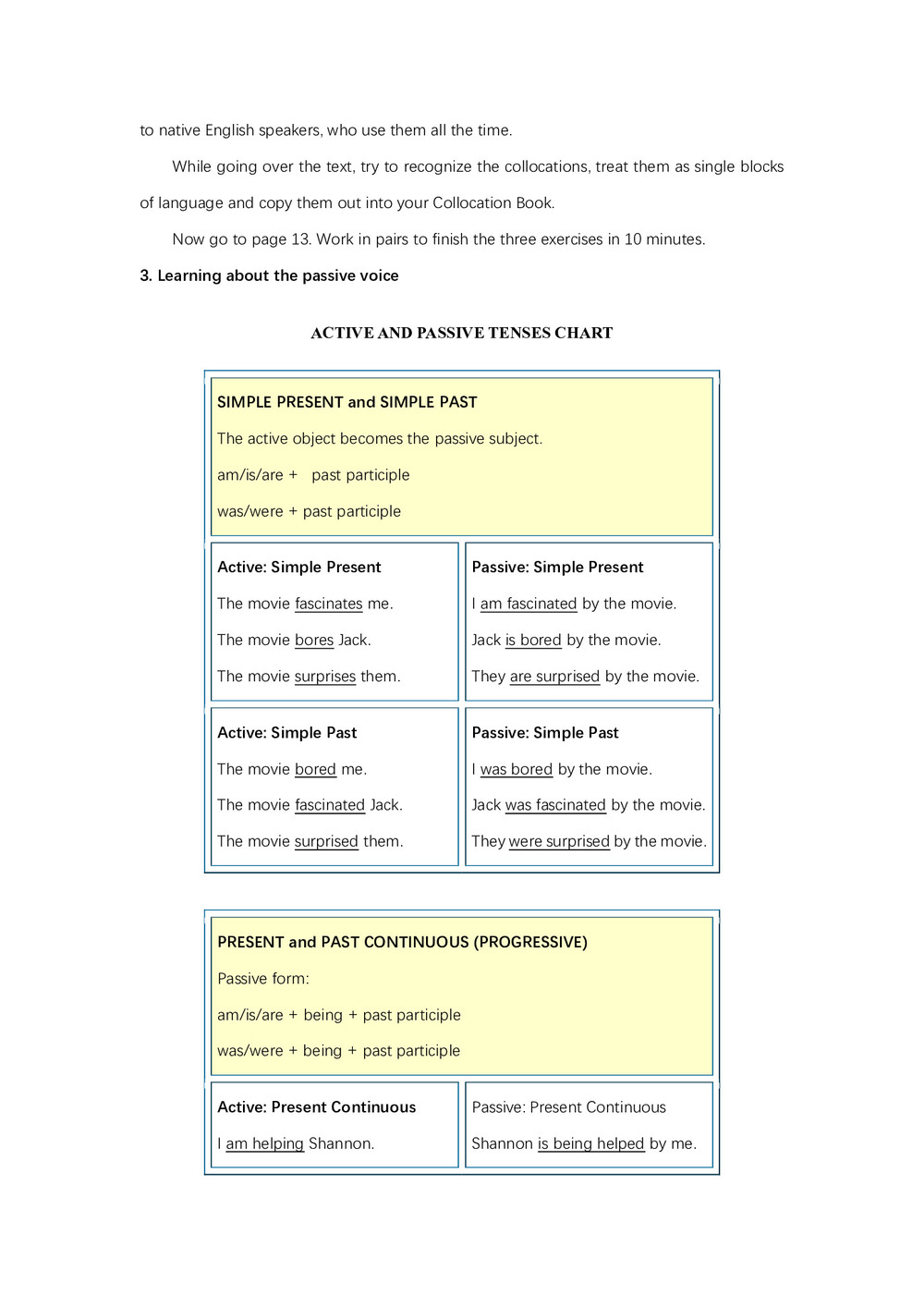
to native English speakers, who use them all the time.
While going over the text, try to recognize the collocations, treat them as single blocks of language and copy them out into your Collocation Book.
Now go to page 13. Work in pairs to finish the three exercises in 10 minutes.
3. Learning about the passive voice
ACTIVE AND PASSIVE TENSES CHART
SIMPLE PRESENT and SIMPLE PAST
The active object becomes the passive subject.
am/is/are + past participle
was/were + past participle Active: Simple Present
The movie fascinates me.
The movie bores Jack.
The movie surprises them. Passive: Simple Present
I am fascinated by the movie.
Jack is bored by the movie.
They are surprised by the movie. Active: Simple Past
The movie bored me.
The movie fascinated Jack.
The movie surprised them. Passive: Simple Past
I was bored by the movie.
Jack was fascinated by the movie.
They were surprised by the movie.
PRESENT and PAST CONTINUOUS (PROGRESSIVE)
Passive form:
am/is/are + being + past participle
was/were + being + past participle Active: Present Continuous
I am helping Shannon.
June is helping Su and Ling. Passive: Present Continuous
Shannon is being helped by me.
Su and Ling are being helped by June.
-
相关教案下载
- 12019学年度人教版选修七Unit2RobotsPeriod3Learning about language教案设计(15页word版)
- 22019学年度人教版选修七Unit2RobotsPeriod3Learning about Language教案设计(3页word版)
- 32019学年度人教版选修七Unit2RobotsPeriod2Language points教案设计(4页word版)
- 42019学年度人教版选修七Unit2RobotsPeriod5Using language教案设计(2页word版)
- 52019学年度人教版选修七Unit2 Robots Period Learning about language教案设计(4页word版)
- 62019学年度人教版选修七Unit4SharingPeriod2 Learning about Language教案设计(7页word版)
- 72019学年度人教版选修七Unit 2 RobotsPeriod5 Using Language教案设计(4页word版)
- 82019学年度人教版选修八Unit 1 A land of diversity Period 2 Learning about Language教案设计(2页word版)
- 92019学年度人教版选修七Unit 2 RobotsPeriod5 Using Language--Writing教案设计(2页word版)